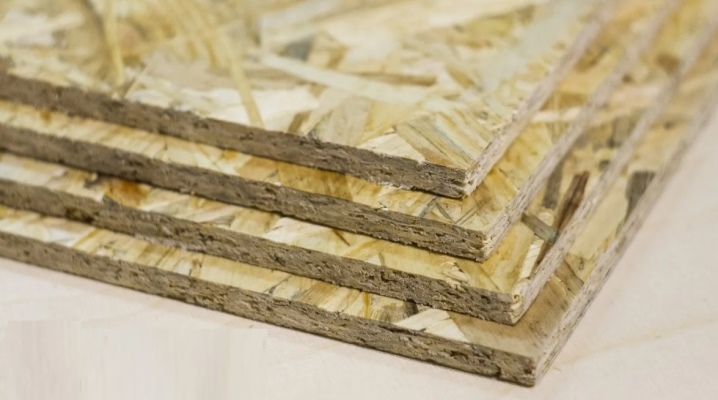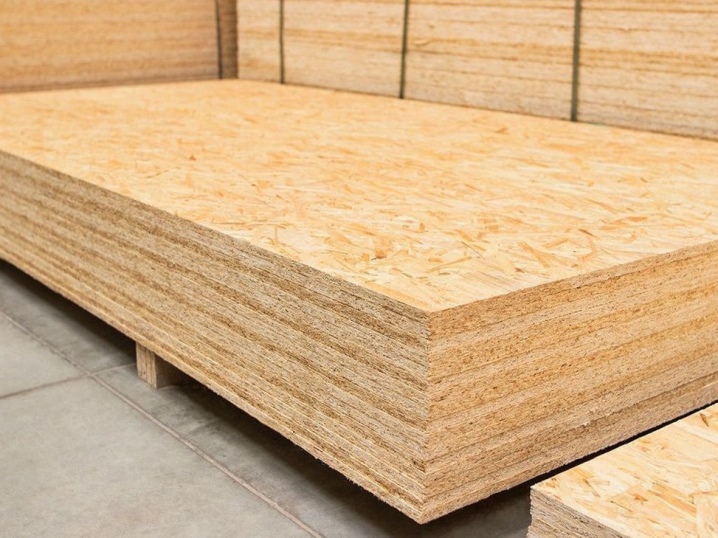Everything you need to know about 9 mm OSB sheets

This article contains everything you need to know about 9 mm OSB sheets, their standard sizes and weights. The mass of 1 sheet of material is characterized. Sheets 1250 by 2500 and 2440x1220 are described, the necessary self-tapping screws for them and the contact area, which is normal for 1 self-tapping screw.


Advantages and disadvantages
OSB, or oriented strand board, is one of the types of multilayer building materials of wood origin. To obtain it, wood chips are pressed. In general, the OSB, regardless of the specific format, has the following important properties:
-
long time of use - subject to sufficient tightness;
-
minimal swelling and delamination (if quality raw materials are used);
-
increased resistance to biological influences;
-
ease of installation and accuracy of the specified geometry;
-
suitability for work on uneven surfaces;
-
optimal ratio of cost and practical qualities.

But at the same time OSB sheets are 9 mm:
-
if the tightness is broken, they will suck in water and swell;
-
due to the content of formaldehyde, they are unsafe, especially in enclosed spaces;
-
also contain very dangerous phenols;
-
sometimes produced by manufacturers who do not comply with any restrictions on the concentration of harmful substances.

Main characteristics
The distinction between these characteristics is made according to the technical classes of oriented slabs. But all of them, one way or another, are created from shavings collected in several layers. Orientation is performed only within specific layers, but not between them. Orientation in longitudinal and cross sections is not clear enough, which is associated with the objective nuances of the technology. And yet, most large-sized shavings are clearly oriented, as a result of which rigidity and strength in one plane is fully ensured.

The key requirements for oriented slabs are set by GOST 32567, which has been in effect since 2013. In general, it reproduces the list of provisions voiced by the transnational standard EN 300: 2006.

The OSB-1 category includes material that cannot be used for load-bearing parts of structures. Its resistance to moisture is also minimal. Such products are taken only for extremely dry rooms; but there they are ahead of both the cement-bonded particleboard and the plasterboard.

OSB-2 is tougher and stronger. It can already be used as a load-bearing element for secondary, lightly loaded structures. But resistance to moisture still does not allow the use of such material outdoors and in damp rooms.

As for OSB-3, then it surpasses OSB-2 only in moisture protection. Their mechanical parameters are almost identical or differ by a value that is negligible in practice.

OSB-4 take, if you need to provide extremely high characteristics both in terms of strength and protection from water.

A quality sheet with a thickness of 9 mm can withstand a weight of at least 100 kg. Moreover, without changing the geometric parameters and deteriorating consumer qualities. For more information, see the manufacturer's documentation. For indoor use, 9 mm is usually sufficient. A thicker material is taken either for external decoration or for supporting structures.

An important parameter is thermal conductivity. It is 0.13 W / mK for OSB-3. In general, for OSB, this indicator is taken equal to 0.15 W / mK. The same thermal conductivity of drywall; expanded clay allows less heat to pass through, and plywood a little more.

A very important criterion for selecting OSB sheets is the concentration of formaldehyde. It is possible to do without it in the production of such products, but alternative safe adhesives are either very expensive or do not provide the required strength. Therefore, the key parameter is the emission of this very formaldehyde. The best class E0.5 implies that the amount of toxin in the material does not exceed 40 mg per 1 kg of the board. Importantly, the air should not contain more than 0.08 mg of formaldehyde per 1 m3.

Other categories are E1 - 80 mg / kg, 0.124 mg / m3; E2 - 300 mg / kg, 1.25 mg / m3. Regardless of belonging to a particular group, the concentration of the toxin per day should not exceed 0.01 mg per 1 m3 of air in a dwelling. Given this requirement, even the conditionally protected version of E0.5 emits too much harmful substance. Therefore, it cannot be used to decorate living rooms where there is insufficient ventilation. It is necessary to pay attention to other important properties.

Dimensions and weight
There is no need to talk about the standard dimensions of an OSB sheet with a thickness of 9 mm. The necessary requirements are not specified in GOST. However, the majority of manufacturers still supply such products with more or less ordered sizes. The most common are:
-
1250x2500;

- 1200x2400;

-
590x2440.

But you can easily order an OSB sheet with a thickness of 9 mm with other indicators in width and length. Almost any manufacturer can even supply material up to 7 m long. The weight of one sheet is determined precisely by the thickness and linear dimensions. For OSB-1 and OSB-4, the specific gravity is exactly the same, more precisely, it is determined by the nuances of technology and the characteristics of raw materials. It varies from 600 to 700 kg per 1 cu. m.

The calculation is therefore not difficult at all. If we take a slab with dimensions of 2440x1220 millimeters, then its area will be 2.9768 "squares". And such a sheet weighs 17.4 kg. With a larger size - 2500x1250 mm - the weight increases to 18.3 kg, respectively. All this is calculated on the assumption of an average density of 650 kg per 1 cubic meter. m; a more accurate calculation involves taking into account the real density of the material.

Applications
Oriented 9 mm slabs are used according to the category:
-
OSB-1 is used only in the furniture industry;

- OSB-2 is needed for rooms with normal humidity when sheathing load-bearing structures;

-
OSB-3 can be used even outside, subject to enhanced protection against adverse factors;

- OSB-4 is an almost universal material that can survive contact with a humid environment for a long time without additional protection (however, such a product is more expensive than conventional plates).

Installation tips
But simply choosing the right category of oriented blocks is not enough. We'll also have to figure out how to fix them. Fixation to concrete or brick is usually done using:
-
special glue;
-
dowels;
-
twisting screws 4.5-5 cm long.

The choice in a particular case is determined by the state of the surface. On a sufficiently smooth substrate, even if it is concrete, the sheets can simply be glued. Additionally, climatic parameters are taken into account. So, when working on the roof, OSB is often nailed with ring nails. This makes it possible to compensate for the powerful loads generated by wind and snow.

Still, most people choose to use traditional self-tapping screws. It must be borne in mind that they must:
-
be distinguished by high strength;
-
have a countersunk head;
-
be equipped with a drill-like tip;
-
covered with a reliable anti-corrosion layer.

They certainly pay attention to such an indicator as the permissible load on the screw. So, if you have to hang a segment weighing no more than 5 kg on concrete, then you need to use 3x20 products. But the attachment of a slab weighing 50 kg to a wooden base is made with self-tapping screws at least 6x60. Most often, 1 sq. m of surface, 30 nails or self-tapping screws are consumed. The step of the crate is calculated taking into account the slope, and only contacting specialists will help to determine it as accurately as possible.
But usually they try to make the step a multiple of the sheet size. The lathing can be made on the basis of a bar with a small section and slats. Another option implies the use of wood or metal profiles. At the stage of preparation, in any case, the base is primed to exclude the appearance of mold. It is impossible to carry out the lathing without marking, and only the laser level provides sufficient reliability of dimensioning.














The comment was sent successfully.